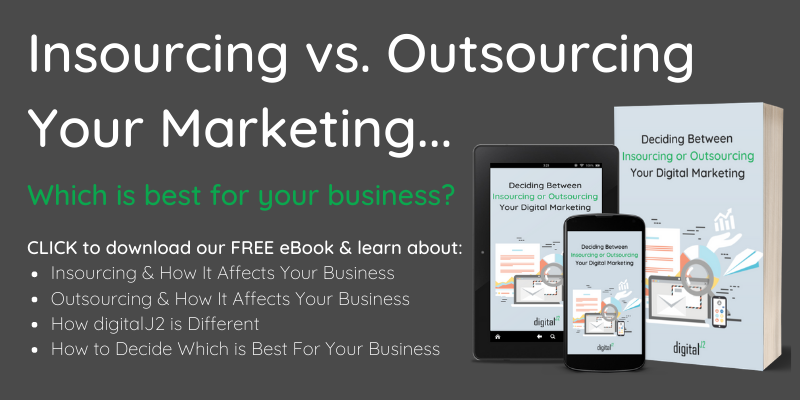
Psychologists call it “analysis paralysis.”
It’s when a person has so many options and so much information, they can’t make up their minds. So they don’t make a decision at all.
Analysis paralysis can happen to a consumer when they are inundated with a slew of choices for a product on a shelf. It can also happen to a marketer who is overwhelmed by the hundreds of strategies that can be used to attract customers.
In this article, we’re going to talk about deciding on a marketing strategy based on the goals you have and the results you want. This includes how to determine which efforts to employ and if they’re successful.
What Are the Steps Before Deciding on a Marketing Strategy?
You need to do your homework before coming up with a marketing plan that aligns with the targets you want to hit and the outcomes you desire.
Identify Business Goals
Start with the big picture. Your marketing strategy should support your business goals, so it helps to know what they are. For example, your company may want to land five new accounts each month or increase sales by 15% annually.
Using the SMART method is a good way for your business to set well-defined goals. Your targets should be Specific, Measurable, Achievable, Relevant, and Time-bound. Once you’ve identified your business goals, you can better understand how your marketing goals should match up.
Pinpoint Marketing Goals
Choose your marketing goals based on how they can help you achieve your business objectives. For example, your team may want to bring in more qualified leads or improve conversion rates to help acquire new accounts and increase sales.
The SMART method should be used for marketing goals as well so they are clear and precise. These targets can be short-term, long-term, or a mix of both. Setting marketing goals will motivate you to stay in line with your business objectives and strengthen your overall strategy.
Define the Target Audience
Figure out who you want to sell to and what they need. How do they buy? Where do they buy? What do they buy? Why do they buy? When you know more about your prospects, you’ll learn what it takes to attract them and eventually convert them into buyers.
Your potential customers have pain points that need to be addressed. They have a problem; you have the solution. You need to know the best ways to get in front of them and offer the answer they’ve been looking for.
Create a Budget
Once you’ve determined the goals you want to achieve and the prospects who should be targeted, you have to crunch some numbers. Creating a marketing budget will allow you to allocate money toward different resources to see what works best.
Committing to a marketing budget will also help you narrow down your choices of marketing strategies to what you can afford. You don’t want to get in over your head, but you don’t want to sell yourself short.

Research the Market
The next step is to see what’s out there. Investigate the size, growth, and social trends of your market. Look at demographics, such as age, gender, and family type. This will help you understand how your product or service fits into the current environment of your industry.
Market research allows you to make better decisions about pricing, promotion, product, and location. This data gives you the ability to test concepts, new products, or marketing ideas in the future. It also allows you to identify new opportunities and minimize risks.
Analyze Competitors
While you’re exploring the industry, check to see what your competitors are up to. Identify their products, supply chains, pricing, and marketing tactics. Use this information to determine what sets you apart from them.
Researching your competitors will help pinpoint their strengths and weaknesses, as well as your own. You’ll be able to see the gaps they’re leaving in the market and discover ways you can fill them. For example, if their online presence is weak, that would be a good area for you to emphasize.
Develop a Marketing Strategy
Finally, it’s time to develop your marketing strategy! Based on all of the knowledge you’ve gained in the preceding steps, would your customers be best reached by direct marketing, content marketing, or paid advertising? Or a mix of these tactics?
To get the most bang for your buck, you also should think about the ease and effectiveness of the strategy you choose. Which methods take the least amount of effort? Which strategies get the most results? Which opportunities will allow you to maximize your time, energy, and resources?
Test Ideas and Evaluate Results
After you’ve chosen a route, take it! See what works and what doesn’t. You can always change the plan down the road, however, you don’t want to abandon ship too early. Give your marketing strategy ample time to play out and review its effectiveness before you make any major changes.
A successful marketing strategy will reach your target customers, meet their needs, and improve your sales. Stay consistent, track results, and adjust tactics as needed.
Deciding on a Marketing Strategy Based on Results You Want
Now you know more about deciding on a marketing strategy based on the goals you want to achieve and the results you want to obtain.
You’ve learned that coming up with a marketing plan that’s right for your business takes some research. You have to identify your goals, define your audience, create a budget, research the market, and analyze your competitors before you even think about developing a winning strategy.
In the end, you have to decide if your marketing plan was a success or a failure so you know how to proceed. By fixating on attainable goals and desired outcomes, you will be able to focus your efforts where they can be the most effective.







